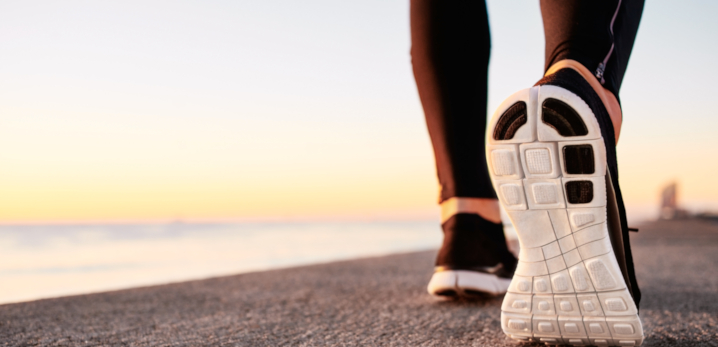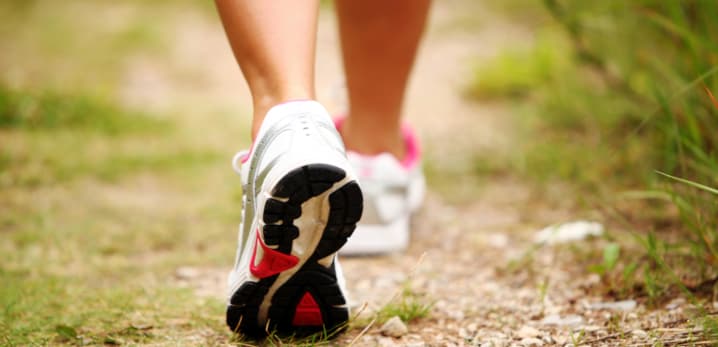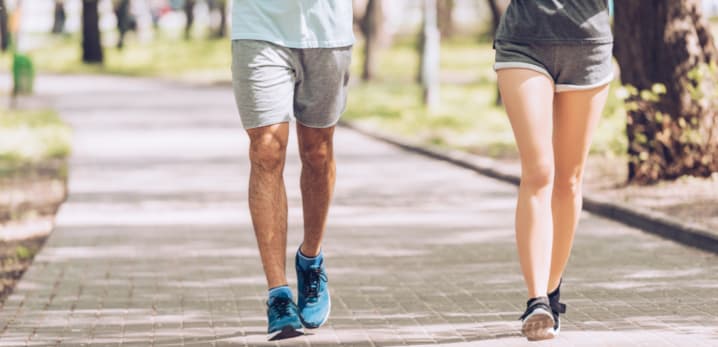Running is a popular activity that attracts individuals of all ages and fitness levels. However, selecting the right pair of running shoes can be a daunting task, given the myriad options available on the market.
Understanding the different types of running shoes is essential for enhancing performance, ensuring comfort, and preventing injuries. This detailed overview aims to guide readers through the various categories of running shoes, highlighting their unique features, benefits, and appropriate uses.
Whether you are a seasoned runner or just starting your journey, this comprehensive examination will equip you with the knowledge needed to make an informed choice for your footwear.
Table of Contents
- Importance of Choosing the Right Running Shoes
- Types of Running Shoes
- Factors to Consider When Choosing Running Shoes
- How to Properly Fit Running Shoes
- Common Myths About Running Shoes

Importance of Choosing the Right Running Shoes
Choosing the right running shoes is crucial for performance and injury prevention. Proper footwear provides the necessary support and cushioning tailored to your foot type and running style. The right shoes help absorb impact, reduce strain on joints, and enhance comfort during runs. This can lead to improved efficiency and longer distances without discomfort.
Additionally, wearing appropriate shoes can prevent common running injuries, such as shin splints, plantar fasciitis, and blisters. Investing time in selecting the right running shoes is essential for both novice and experienced runners to ensure a healthier and more enjoyable running experience.
Types of Running Shoes
1. Road Running Shoes
Road running shoes are designed specifically for running on pavement and smooth surfaces. They typically feature lightweight materials, a cushioned midsole for shock absorption, and a flexible outsole to allow for natural foot movement. These shoes provide support and stability for runners, helping to enhance performance and reduce the risk of injury on hard, flat terrain.
2. Trail Running Shoes
Trail running shoes are specialized footwear designed for off-road running on varied terrain. They feature aggressive traction patterns for better grip on uneven surfaces, reinforced toe caps for protection against rocks and roots, and durable materials to withstand harsh conditions.
Additionally, they often have a lower drop for improved stability and a snug fit to keep the foot secure. Trail running shoes provide cushioning and support while allowing for natural movement, making them ideal for outdoor trails, mountains, and rugged paths.
3. Cross-Training Shoes
Cross-training shoes are versatile athletic footwear designed for various types of workouts, including gym exercises, running, and other fitness activities. They provide a balance of support, cushioning, and flexibility, making them suitable for activities that involve lateral movements as well as forward motion. These shoes typically feature a stable base for weightlifting, adequate cushioning for cardio workouts, and a durable outsole for traction on different surfaces.
4. Racing Flats
Racing flats are lightweight running shoes designed for speed and performance on race day. Typically featuring a minimalist design, they provide minimal cushioning and support, allowing runners to feel the ground and achieve faster times. Racing flats are often used in competitive events such as road races, track meets, and marathons. Their streamlined construction helps reduce fatigue, making them ideal for experienced runners looking to improve their race performance.
5. Minimalist Shoes
Minimalist shoes are footwear designed to provide a natural feel and motion for the foot, closely mimicking barefoot walking or running. They typically feature a lightweight construction, minimal cushioning, a low heel-to-toe drop, and a flexible sole that allows for a broader range of motion. These shoes aim to promote a more natural gait and enhance foot strength, making them popular among runners and fitness enthusiasts seeking a more connected experience with the ground.
6. Stability Shoes
Stability shoes are a type of footwear designed for runners who require support and structure to prevent excessive pronation, which can lead to injuries. They typically feature a combination of cushioning and firm medial support to help maintain proper foot alignment during the running gait.
Stability shoes are ideal for moderate overpronators, providing the right balance of comfort and support for long-distance running. Key characteristics include a supportive midsole, a structured heel counter, and a durable outsole for enhanced traction.
7. Motion Control Shoes
Motion control shoes are specialized footwear designed to provide maximum support and stability for runners who overpronate, which is when the foot rolls inward excessively during the gait cycle. These shoes typically feature a firmer midsole, denser cushioning, and additional arch support to help correct foot alignment and reduce the risk of injury.
Motion control shoes aim to enhance comfort and performance by guiding the foot into a more neutral position, making them ideal for individuals with flat feet or those who require extra support during physical activities.

Factors to Consider When Choosing Running Shoes
1. Foot Type
Foot types refer to the different shapes and structures of human feet, which can significantly affect how individuals walk, run, and perform various activities. There are three primary foot types:
- Neutral Foot: Characterized by a balanced arch, this foot type has even weight distribution and offers stability and support. Individuals with neutral feet typically have a normal range of motion.
- Flat Foot (Overpronation): This type features a low or non-existent arch, causing the foot to roll inward excessively when walking or running. Flat-footed individuals may experience increased stress on the knees and ankles.
- High Arch (Supination): A high arch foot type has a pronounced arch, leading to less contact with the ground. This can cause the foot to roll outward, resulting in different pressure points and potential discomfort.
Understanding foot types is essential for selecting appropriate footwear and preventing injuries.
2. Running Style
Running styles refer to the various techniques and forms that runners use while running. These styles can be influenced by factors such as body mechanics, speed, terrain, and personal preference. Common running styles include forefoot striking, midfoot striking, and heel striking, each involving different foot placements and impacts on the ground.
Additionally, running styles can vary based on the type of running, such as sprinting, long-distance running, or trail running. Understanding one’s running style can help improve performance, reduce the risk of injury, and tailor training regimens.
3. Terrain
Running terrain can be categorized into several types:
- Road: Paved surfaces like streets and sidewalks provide a smooth and even running experience.
- Trail: Natural paths that may include dirt, gravel, and uneven surfaces, often found in parks or wooded areas.
- Track: Specifically designed running tracks, usually made of synthetic materials, offering a flat, even surface for speed work.
- Treadmill: Indoor equipment that simulates running on a flat surface, adjustable for incline and speed.
- Grass: Soft, natural surfaces ideal for recovery runs, often found in parks or fields.
- Sand: Beach or desert sand, providing a challenging surface that requires more effort to run on.
- Hills: Inclined terrain that can be found in various environments, offering strength and endurance challenges.
- Mixed Terrain: Combinations of different surfaces within a single run, requiring adaptability and varied pacing.
4. Fit and Comfort
Fit and comfort are crucial factors when choosing running shoes. A proper fit ensures that the shoe aligns with your foot shape, preventing blisters and discomfort during runs. Shoes that are too tight can lead to pain and restricted circulation, while overly loose shoes can cause instability and increase the risk of injury.
Comfort affects your running experience directly; shoes with adequate cushioning and support reduce fatigue and enhance performance. Prioritizing fit and comfort helps maintain proper running form, allowing for longer, injury-free runs. Always try on shoes with the socks you’ll wear during runs and consider the type of terrain you’ll be running on to ensure optimal fit and comfort.
5. Cushioning and Support
Cushioning and support are crucial factors in selecting running shoes as they significantly affect comfort, performance, and injury prevention. Adequate cushioning absorbs impact, reducing stress on joints during runs, while proper support helps maintain alignment, enhancing stability and reducing the risk of overpronation or supination.
A well-cushioned shoe can improve endurance by minimizing fatigue, allowing for longer runs without discomfort. Additionally, choosing shoes that provide the right support for your foot type is essential for optimizing your running gait and overall efficiency.

How to Properly Fit Running Shoes
1. Measuring Foot Size
To properly measure your foot, follow these steps:
- Gather Materials: You will need a ruler or measuring tape, a piece of paper, and a pencil.
- Prepare the Paper: Place the paper on a flat surface against a wall.
- Position Your Foot: Stand on the paper with your heel against the wall. Ensure your weight is evenly distributed on both feet.
- Mark the Length: Use the pencil to mark the longest toe on the paper.
- Measure the Length: Use the ruler or measuring tape to measure from the wall to the mark. This measurement is your foot length.
- Measure the Width: While standing, use the ruler to measure the widest part of your foot in the same way.
- Record Measurements: Note down both the length and width for future reference when purchasing shoes.
- Repeat: Measure both feet, as they may differ in size. Always use the larger measurement for fitting purposes.
2. Trying on Shoes
Trying on running shoes is crucial for ensuring a proper fit and comfort. Each brand and model can vary significantly in sizing and support. A well-fitting shoe reduces the risk of injury, enhances performance, and improves the overall running experience.
Different runners have unique foot shapes and gait patterns, making it essential to assess how a shoe feels during movement. Testing shoes in-store allows for evaluation of cushioning, arch support, and width, ensuring you select the best option for your specific needs. Always walk or jog a short distance to identify any potential discomfort before making a purchase.
3. Assessing Comfort and Fit
To assess comfort and fit when choosing running shoes, follow these steps:
- Measure Your Feet: Measure both feet while standing, as one foot may be larger than the other. Use a Brannock device or a ruler.
- Try Shoes on Later in the Day: Your feet swell throughout the day, so try on shoes in the afternoon or after a run for a more accurate fit.
- Wear Appropriate Socks: Bring the type of socks you usually wear while running to ensure a proper fit.
- Check the Width: Ensure the shoe is snug but not too tight. There should be enough room to wiggle your toes without feeling cramped.
- Test the Heel Fit: Your heel should feel secure in the shoe without slipping. A slight amount of movement is acceptable, but excessive slipping can lead to blisters.
- Walk and Run in the Shoes: Spend time walking and jogging in the shoes to assess comfort. Pay attention to any areas of pressure or discomfort.
- Check for Cushioning: Evaluate the cushioning and support based on your running style and preferences. Some runners prefer more cushioning, while others favor a minimalist feel.
- Consider Your Arch Type: Identify your arch type (flat, neutral, or high) and choose shoes that provide appropriate support.
- Assess Flexibility: Flex the shoe in your hands. It should bend at the ball of the foot, not the arch. Too much rigidity can impede your natural movement.
- Look for Breathability: Ensure the shoe has breathable materials to keep your feet cool and dry during runs.
- Seek Professional Fit: If possible, visit a specialty running store for a professional fitting and gait analysis.
- Break-in Period: Remember that some shoes may require a short break-in period, but significant discomfort should not persist.
Assessing these factors will help you choose the right running shoes for your needs.

Common Myths About Running Shoes
1. Expensive Shoes Are Always Better
The belief that expensive shoes are always better is a common myth. While higher-priced shoes may offer premium materials and advanced technology, many affordable brands also provide quality, comfort, and durability.
Factors such as fit, purpose, and personal preference often play a more significant role in determining a shoe’s effectiveness than its price tag. Additionally, some luxury brands charge more for their name rather than the product’s actual quality. It’s essential to evaluate shoes based on individual needs rather than their cost alone.
2. You Should Size Up for Running Shoes
Many runners believe that they should size up when buying running shoes to accommodate foot swelling during long runs. While some swelling can occur, the idea that you should always size up is misleading.
Running shoes should fit snugly but comfortably, with enough room in the toe box to prevent discomfort. A proper fit ensures better control and reduces the risk of blisters and injuries.
It’s crucial to get fitted by a professional and try on shoes later in the day when your feet are slightly swollen to find the right size without automatically opting for a larger shoe.
3. You Don’t Need to Replace Your Shoes Often
Many people believe that shoes don’t need to be replaced frequently, but this is a myth. Over time, shoes lose their cushioning, support, and structural integrity, which can lead to discomfort and even injury.
Running shoes, for example, should typically be replaced every 300 to 500 miles, while everyday shoes should be evaluated regularly for wear and tear. Signs of wear include visible damage, decreased comfort, or lack of support. Regularly replacing shoes ensures optimal performance and helps prevent potential foot and joint problems.
Conclusion
In conclusion, understanding the different types of running shoes is essential for anyone looking to enhance their running experience, whether you’re a seasoned marathoner or a casual jogger. Each shoe type is designed to meet specific needs, accommodating various foot shapes, running styles, and terrain conditions.
By choosing the right pair, you not only improve your performance but also reduce the risk of injury, ensuring that every step you take is comfortable and supported. Take the time to assess your running habits and consult with experts or knowledgeable retailers to find the perfect fit for you. Your feet will thank you, and your running journey will become more enjoyable than ever.
(This content was created with the help of AI.)
You may also like:
